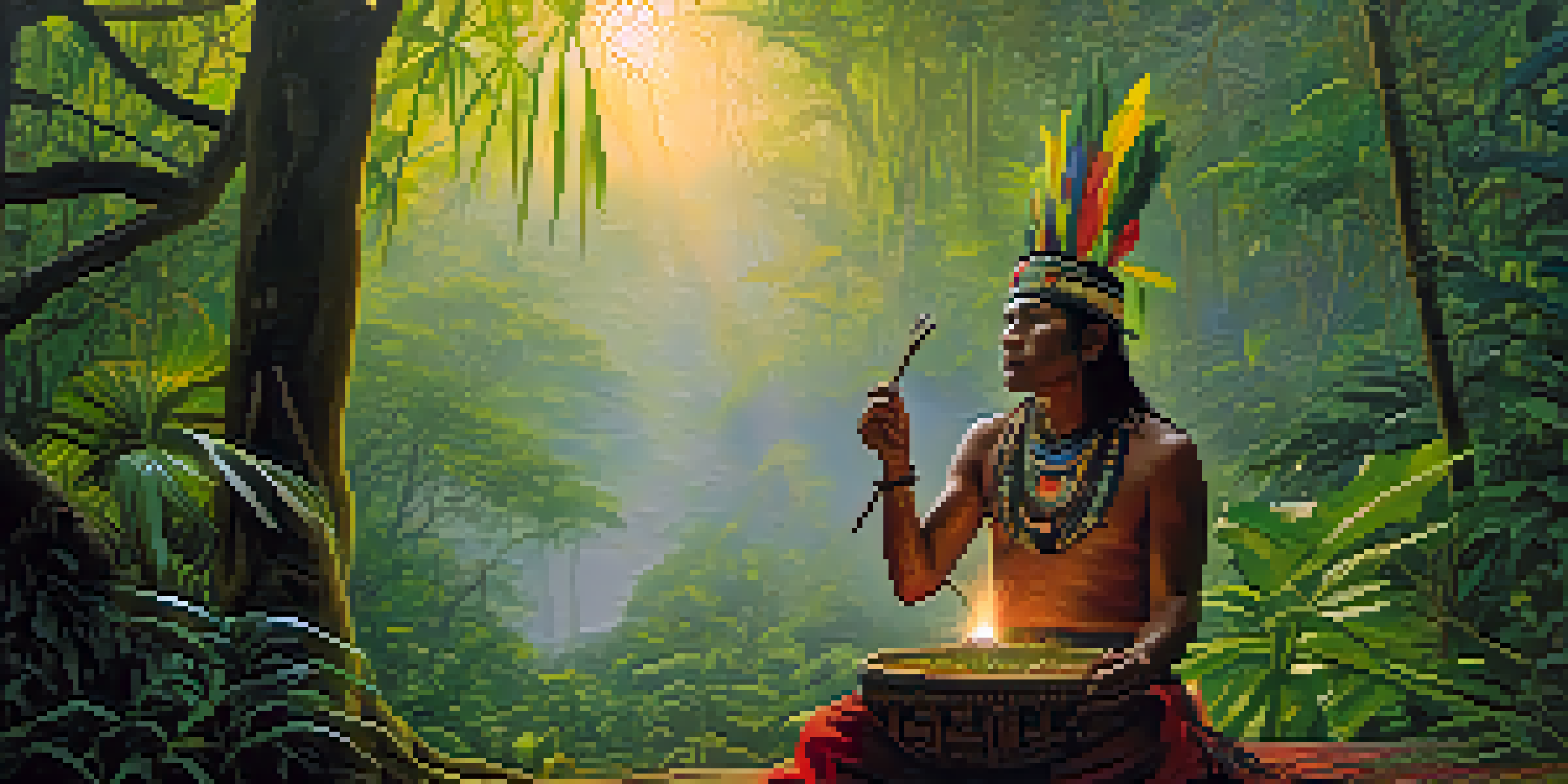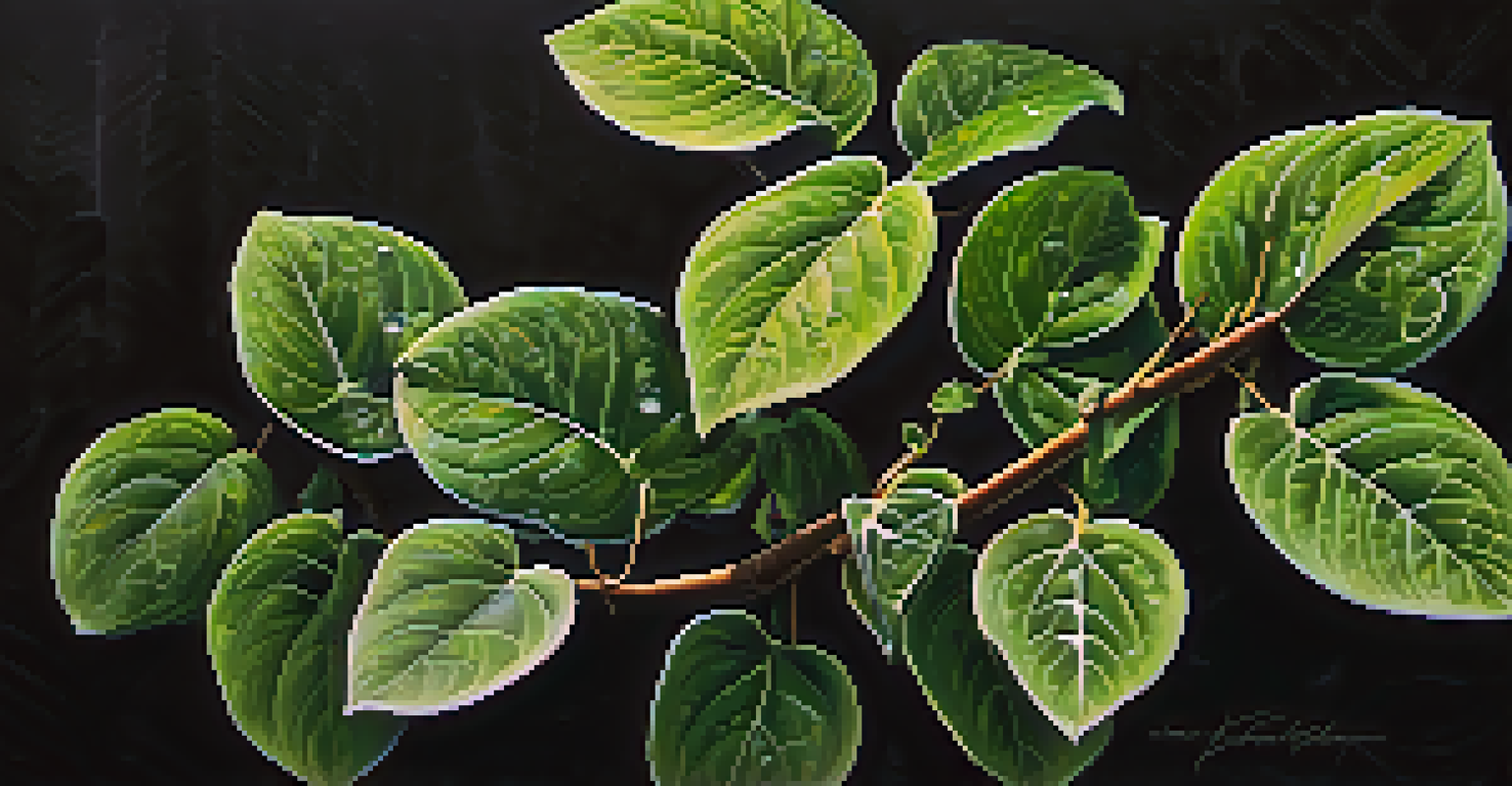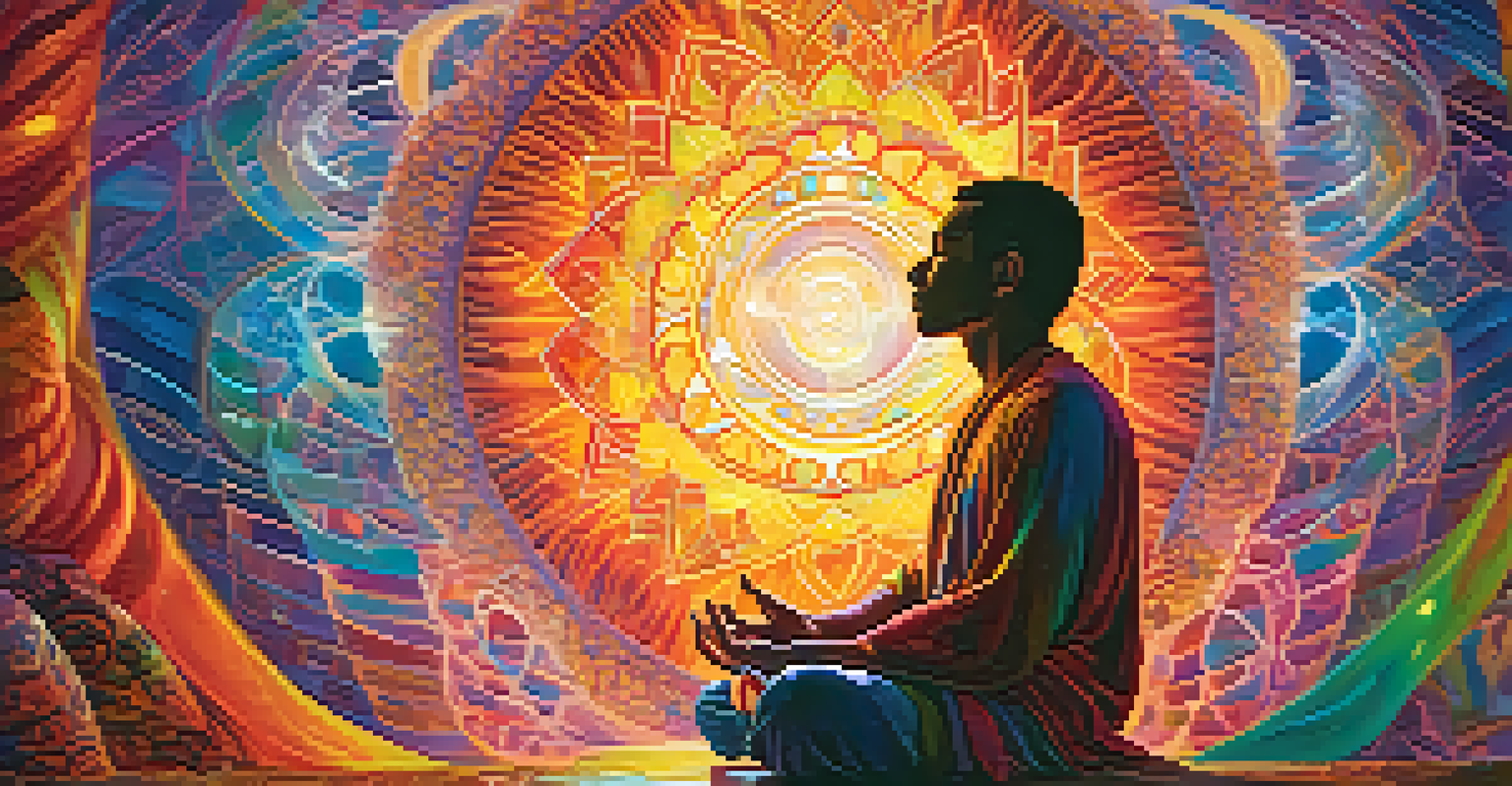Ayahuasca and Shamanism: A Deep Dive into Spiritual Healing

Understanding Ayahuasca: Origins and Ingredients
Ayahuasca, a powerful brew originating from the Amazon rainforest, is made from two key plants: the Banisteriopsis caapi vine and the Psychotria viridis leaf. This combination creates a psychedelic experience that many believe can facilitate deep spiritual healing.
The experience of Ayahuasca is a journey into the depths of the self, where healing and transformation occur.
For centuries, indigenous cultures have used Ayahuasca in sacred ceremonies, often guided by a shaman. These spiritual leaders play a crucial role, as they help participants navigate their experiences and integrate the insights gained during the journey.
The brew's effects are attributed to a compound called DMT (dimethyltryptamine), which is found in the Psychotria viridis leaf. DMT is known for inducing intense hallucinations, allowing individuals to explore their subconscious and connect with higher realms.
The Role of the Shaman in Ayahuasca Ceremonies
In Ayahuasca ceremonies, the shaman acts as a guide and healer, drawing on their extensive knowledge and experience with the plant medicine. They often sing icaros, traditional songs believed to summon protective spirits and create a sacred space.

The shaman's presence is vital for ensuring the safety and well-being of participants. They help to manage emotional reactions and physical discomfort, providing support throughout the often challenging journey of self-discovery.
Ayahuasca's Healing Potential
Ayahuasca offers therapeutic benefits for mental health issues, fostering personal transformation and new perspectives.
Moreover, a shaman's connection to the spiritual world allows them to interpret the visions experienced by participants, offering insights and guidance that can lead to profound personal transformation.
Common Experiences During Ayahuasca Journeys
Each Ayahuasca experience is unique, but many participants report similar themes, such as confronting personal fears, resolving trauma, and gaining clarity about their life purpose. These revelations can be both enlightening and overwhelming.
Ayahuasca is not just a medicine; it is a way of connecting with the universe and understanding our place within it.
Physical effects often accompany the emotional and psychological experiences. Participants may experience nausea or vomiting, which is viewed by many as a form of purging negative energy or emotional blockages.
While some may find the experience challenging, many describe it as cathartic and healing, with some even likening it to a spiritual rebirth that fosters a sense of interconnectedness with the universe.
The Therapeutic Benefits of Ayahuasca
Research suggests that Ayahuasca may offer therapeutic benefits for a range of mental health issues, including depression, anxiety, and PTSD. Many people have reported significant improvements after participating in ceremonies.
The combination of the brew's psychoactive properties and the supportive environment created by the shaman can lead to lasting change. Participants often find new perspectives on their challenges and develop healthier coping mechanisms.
Role of the Shaman Explained
The shaman guides participants through Ayahuasca ceremonies, ensuring safety and interpreting visions for deeper insights.
Additionally, the communal aspect of Ayahuasca ceremonies fosters a sense of belonging and connection, which can be profoundly healing in itself. Sharing these experiences can help individuals feel less isolated in their struggles.
Cultural Significance of Ayahuasca in Indigenous Traditions
Ayahuasca is deeply rooted in the spiritual practices of Amazonian tribes, where it is viewed not just as a medicine but as a sacred gift from the earth. The rituals surrounding its use are imbued with cultural significance and respect.
For these communities, Ayahuasca is a means of connecting with ancestors and the spirit world, facilitating communication that informs daily life and decision-making. This cultural context enriches the experience for participants who approach it with reverence.
As Ayahuasca gains popularity worldwide, it is crucial to honor and respect these indigenous traditions. Understanding the cultural significance can enhance the experience and foster a deeper appreciation for the practices.
Potential Risks and Considerations
While many people find Ayahuasca to be a transformative experience, it is essential to approach it with caution. The psychoactive nature of the brew can trigger intense emotional responses, and not everyone is prepared for this level of introspection.
It's important to consider individual health conditions, as certain medications or mental health issues may contraindicate the use of Ayahuasca. Consulting with a healthcare professional before participating is always a wise step.
Cultural Roots of Ayahuasca
Ayahuasca is a sacred practice in indigenous cultures, serving as a means of connecting with ancestors and the spirit world.
Moreover, the growing popularity of Ayahuasca has led to an increase in unregulated retreats and ceremonies. Ensuring that you choose a reputable shaman and a safe environment is critical to minimizing risks and maximizing the healing potential.
Integrating Ayahuasca Insights into Daily Life
After an Ayahuasca journey, many individuals find themselves at a crossroads, filled with profound insights and a desire for change. However, integrating these revelations into everyday life can be a challenging process.
Journaling, therapy, and community support can be beneficial tools for processing the experience and maintaining the insights gained. Creating a routine that incorporates mindfulness practices can help sustain the feelings of clarity and connection.

Ultimately, the journey doesn’t end when the ceremony does. Embracing the lessons learned and committing to personal growth can lead to lasting transformation and a deeper understanding of oneself and the world.